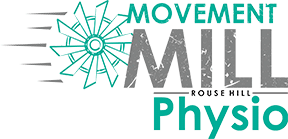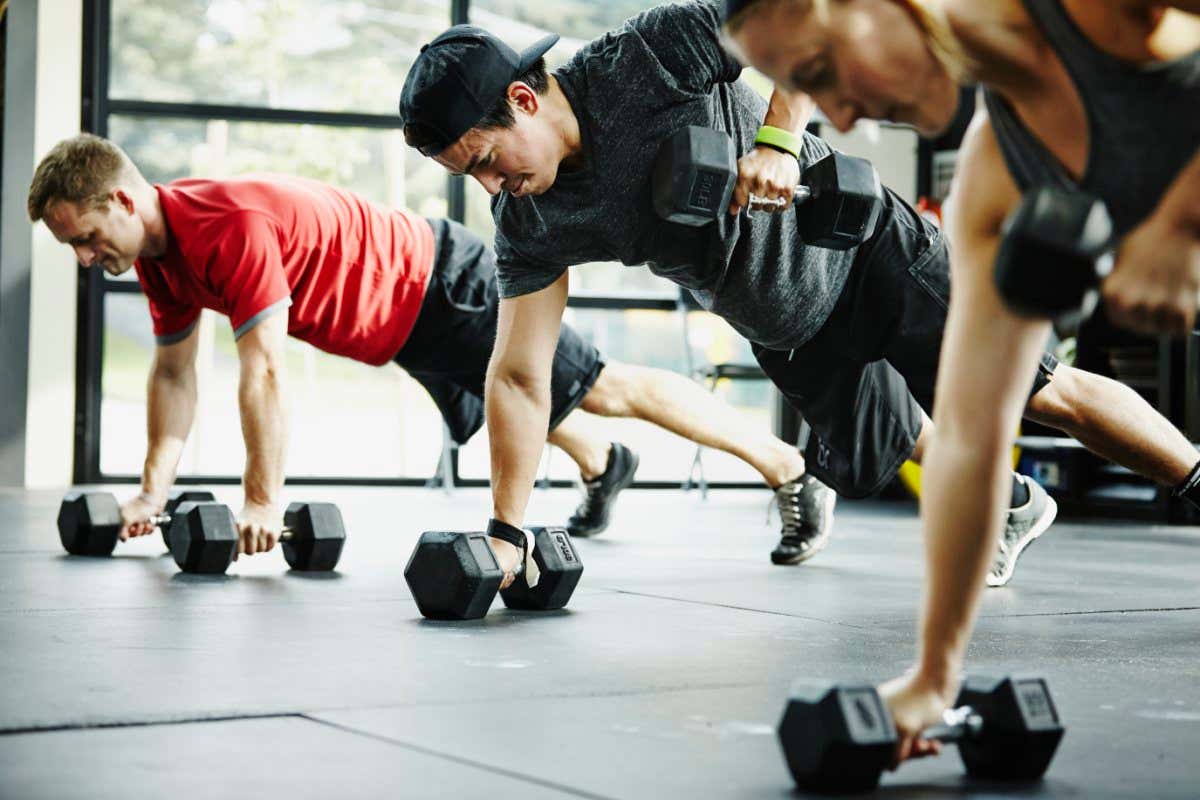
Why do we need to get in shape?
Statistically, the majority of Australians are not doing well with their health. Over 67% of Australians are overweight or obese which increases their risk of cardiovascular, metabolic and chronic disease.
Everyone knows what to do, right? Eat better and Move more? But then why is the health of so many Australian’s at risk?
While the world is becoming more scientifically advanced, the average lifestyle is becoming more physically backwards as activity is taken over by convenience. Instead of walking at the shops things are delivered straight to the comfort of your home.
Dishwashers, washing machines, and Escalators taking out the need for stairs and activity. These things aren’t “bad”, they help with busy lifestyles, however the point is that if you are not including activity into your lifestyle then chances are you are not getting enough. The results can be gradually adding on the pounds each year.
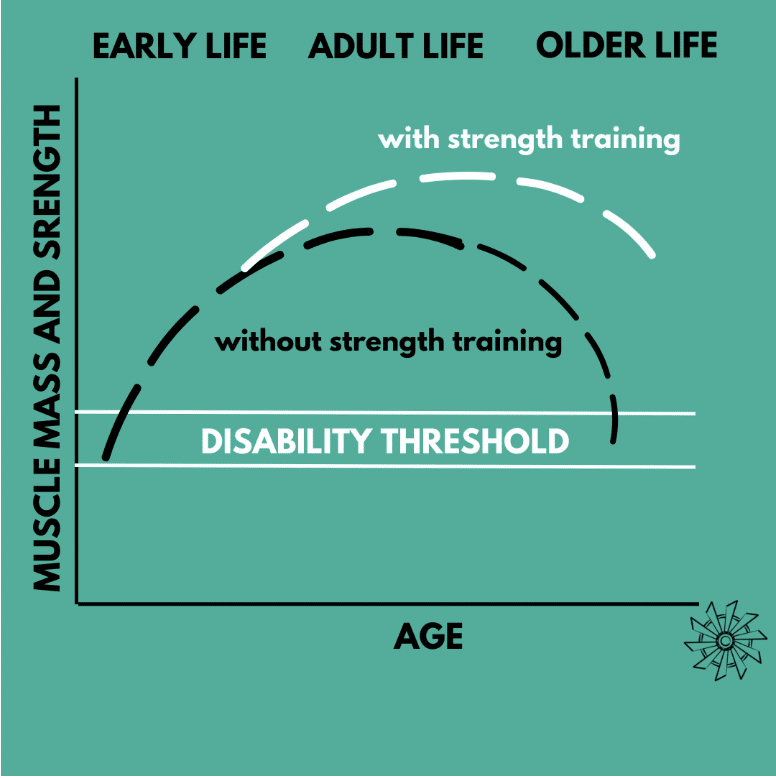
Maybe tying your shoelaces is getting more difficult, or you are noticing yourself get out of breathe on things that you used to handle easily? These are all signs that you need to start prioritising your physical capacity, because if you don’t the spiral will continue downwards. Maybe you received a chat from your doctor telling you that you need to be more active because your blood test results are showing risk or signs of metabolic disease. While all of these things are common it doesn’t mean it is normal.
Many people give in and accept a declining physical capacity thinking its normal…however the GOOD NEWS is that with application of some simple principles and consistency work you can IMPROVE and PREVENT significant decline of your physical activity
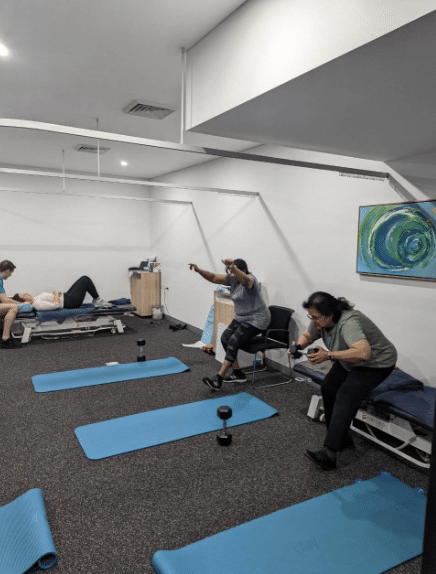
What are we doing about this?
We are helping people finally become healthier and achieving life changing results.
We have people continuously shedding kilograms, dropping centimetres off their waist, improving their energy levels and gaining confidence in their bodies. Doing all of this in a fun and supportive environment, and making friends along the way in our Strength and Stamina Class.
Check out some of these awesome results after an 8 week block of training:
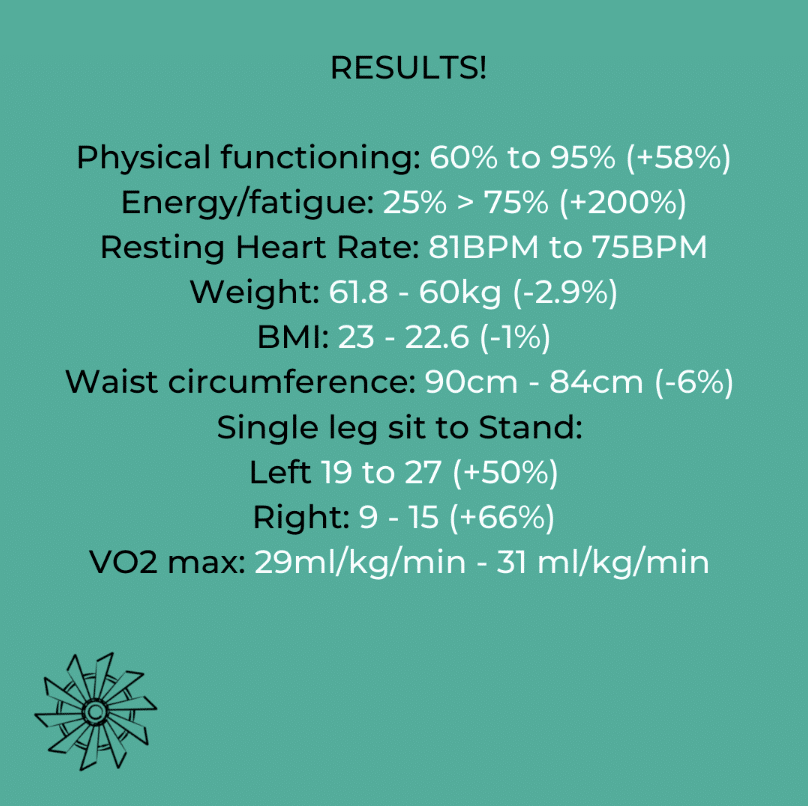
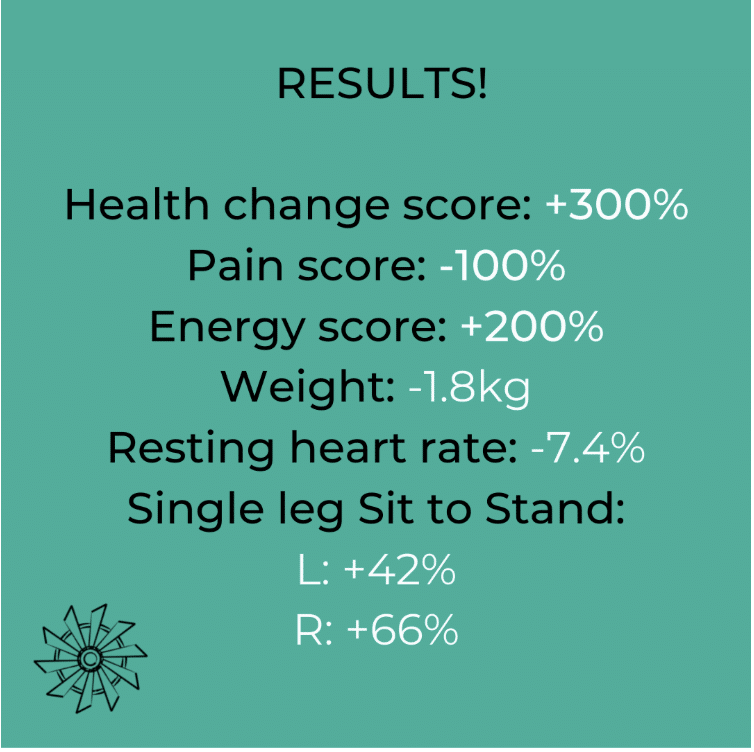
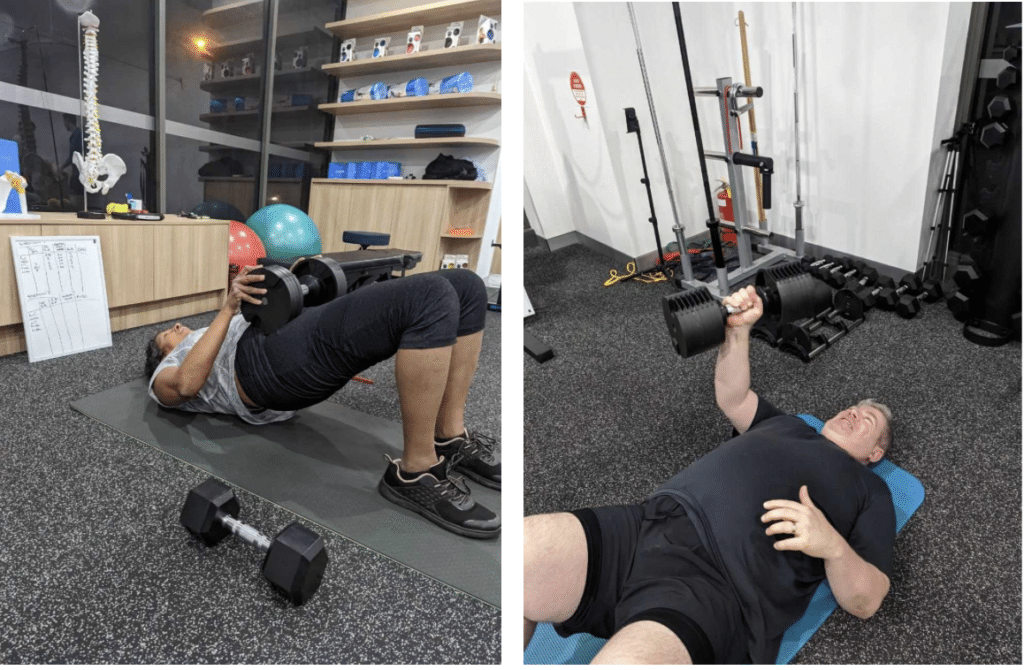
Here are the principles about how the class achieves awesome results:
Physical Activity Levels
- The World Health organisation recommends and average of 30minutes physical activity per day, or 150minutes minimum per week for health and disease risk reduction.
- Performing 2 x 60 minute classes per week of appropriate intensity gets you close to the recommended amount of activity per week.
- If you have a busy lifestyle, simplifying and taking the guesswork out of your physical activity with a professional taking care of your program can help, you just need to execute!
- It also helps training with others in a fun environment with other people wanting to improve themselves…training by yourself can be a bore!
Muscle Mass
- After the ages of 50-60 years old muscle mass and strength levels decline rapidly.
- There is a correlation between grip strength (an indicator of total body strength) and longevity
- There is a major problem with this decline in muscle mass and strength, as muscle mass and strength is important for:
-Strength and function
-Blood sugar control
-Preventing falls
Strength training needs to be performed at an appropriate intensity to be beneficial. A common mistake with people is that they underdose – they use minimal resistance and rely on therbands and light weight relative to them…this will not give you meaningful benefits for muscle mass, strength and bone density.
The benefit of a class such as Strength and Stamina is that our Exercise physiologists can make sure:
- you are exercising with correct technique to prevent injury
- are training at the right intensity to elicit maximal benefit
- that your program based on scientific evidence to make sure you are using effective methods
Cardiovascular Health
Cardiovascular disease is one of the biggest killers in Australia. Physical activity, maintaining a healthy body weight and nutrition are vital elements in minimising the risk.
Cardiovascular training helps by:
- Making blood vessels more able to contract and relax
- Making the chambers of the heart larger
- Increasing the number of peripheral blood vessels
However like the resistance training for muscle mass it needs to be performed at the correct dosage, frequency, and duration. Again the class helps takes the guesswork out and helps you build healthy habits to integrate
To learn more about the class or to book an initial assessment to get your place in our next block call (02) 8322 6899

